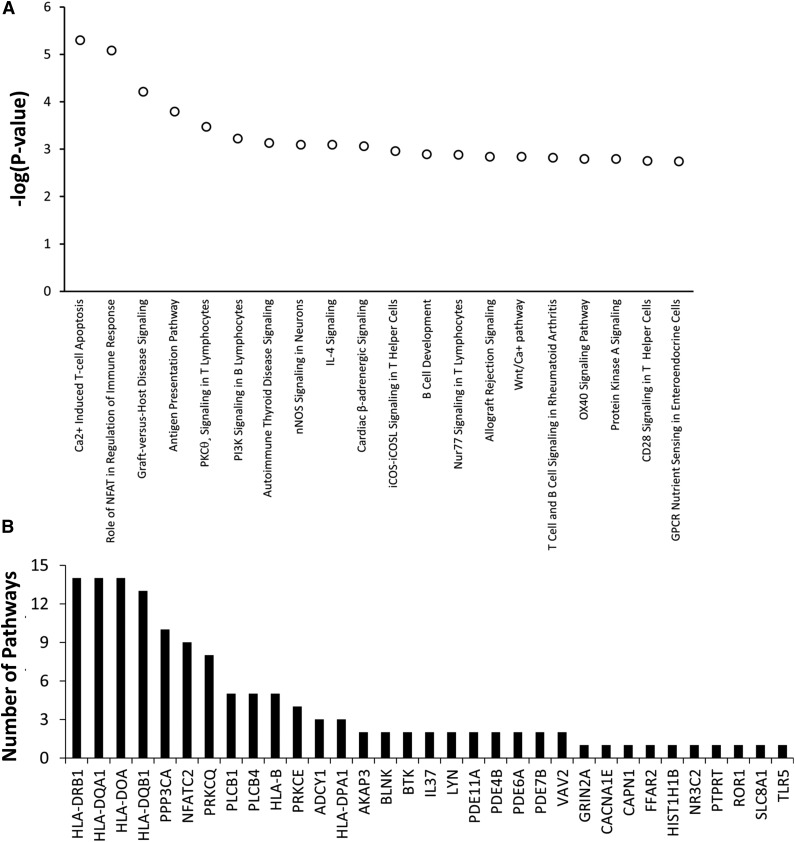Figure 4.
Genes involved in T-cell function may contribute to the risk of developing asparaginase hypersensitivity reactions. IPA was used to determine if genes most associated with asparaginase hypersensitivity were overrepresented in specific biological pathways. A total of 334 genes invoked by 499 SNPs associated with asparaginase hypersensitivity annotated to 234 distinct IPA pathways. (A) The top 20 pathways identified, all with P < 3 × 10−3, were enriched for genes involved in T-cell apoptosis, T-cell signaling, T-cell activation, or T-cell disorders. (B) A total of 33 genes containing SNPs associated with hypersensitivity were included within the top 20 canonical pathways (shown on x-axis). Many of these genes were included in multiple pathways. The number of pathways (out of 20) in which each of these 33 genes is involved is plotted on the y-axis. For example, HLA-DRB1 is involved in 14 out of the 20 top canonical pathways. GPCR, G-protein coupled receptor; nNOS, neuronal NOS; IL, interleukin; iCOS, inducible T-cell costimulator and its ligand, iCOSL.

